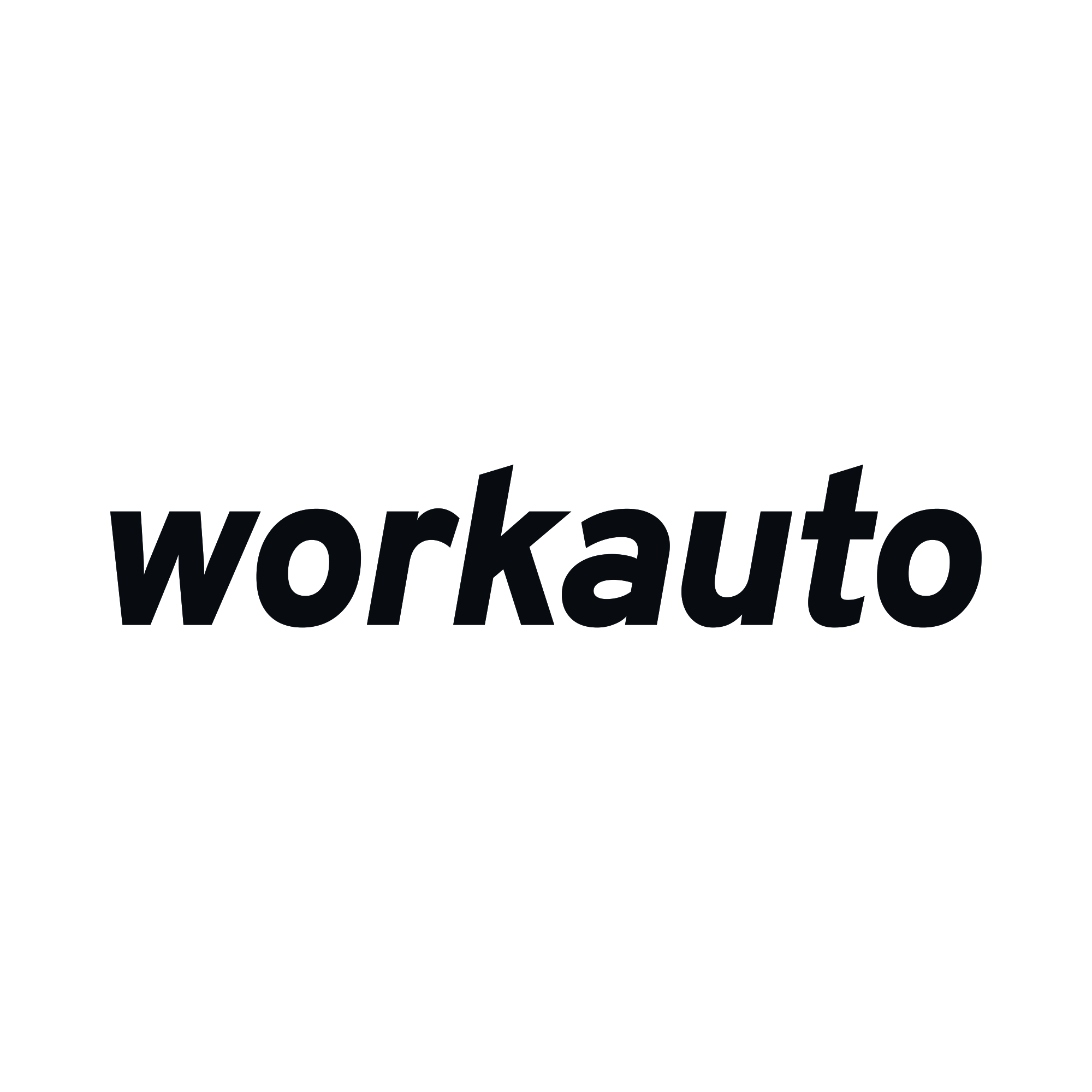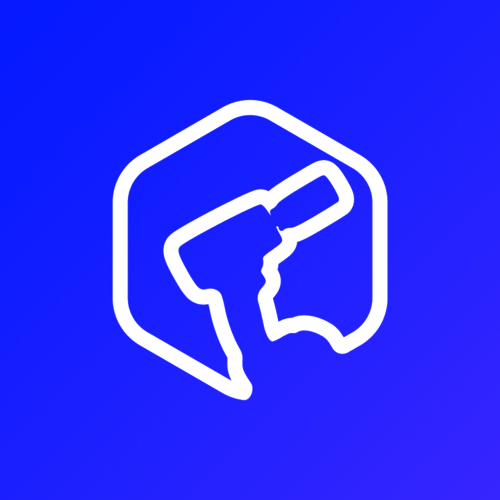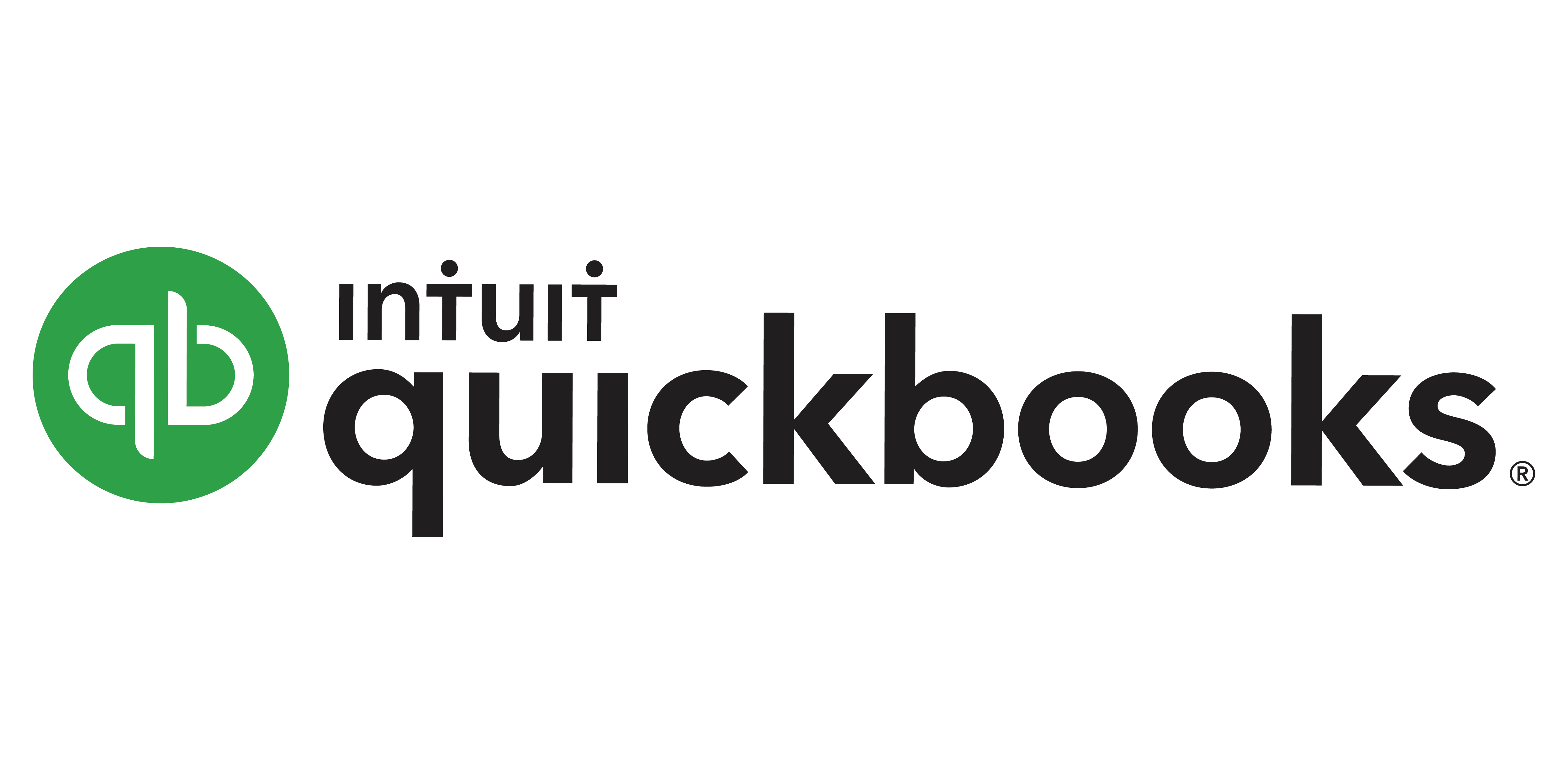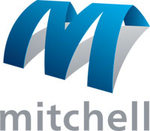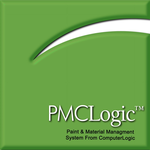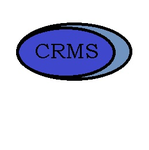Yes, most autobody software may be accessed from a variety of devices and platforms, including desktop computers, laptops, tablets, and smartphones. This enables autobody firms to effortlessly access and update information from anywhere, boosting production and efficiency. Furthermore, several autobody software suppliers provide cloud-based solutions, making it even easier to use the program across multiple devices and platforms.
List of Best Autobody Software
Web-Est, the budget-friendly online estimation software that offers customers a straightforward and user-friendly platform. Our data-powered solution for collision repair and estimation services is available at a low cost for licensed users, guarante...Read More Web-Est
ARI the auto repair software crafted for mechanics. Simplify your garage operations with confidence, thanks to its extensive capabilities. ARI enables seamless management of your tasks and ensures a streamlined workflow. From inventory tracking to ap...Read More ARI (Auto Repair Software)
workauto is a software for efficiently managing your auto workshop or garage. Designed specifically for the automotive industry, workauto brings all your tasks and clients under one roof. Say goodbye to manual processes and streamline your workflow w...Read More workauto
Wrenchy is a shop management software for auto repair businesses. From scheduling and inventory tracking to invoicing and more, Wrenchy simplifies your operations and boosts productivity. Its lightning-fast speed and user-friendly interface enable yo...Read More Wrenchy
Instant Estimator is a free online tool that quickly and accurately determines the cost of repairing any auto body and paint damage. Easily find trusted and certified repair shops in your area for a hassle-free solution for your vehicle. With Instant...Read More Instant Estimator
Crash-writeR Estimating, the top-notch software designed to equip independent body shops with cutting-edge estimating capabilities. Our cost-effective monthly subscription offers unlimited estimates, allowing small and medium-sized shops to work on p...Read More Crash-writeR Estimating
CC3 solution for auto body repair businesses. This advanced software equips you with a range of tools including job costing, accounting, ordering, scheduling, and shop management to optimize your workflow. Its modular structure allows for customizati...Read More CC3
MDS Notify - the essential software for the automotive industry. Elevate your business with our comprehensive tool, which includes billing and invoicing features, a customer database, and estimate recording capabilities. Keep track of customer and ve...Read More MDS Notify
Alldata is a solution for accessing automotive OEM information. Its user-friendly interface and thorough diagnostics make it an essential tool for identifying damage and determining necessary repair materials. With its portable accessibility, Alldata...Read More Alldata
QuickBooks Online, the premier accounting software for entrepreneurs and business owners. Streamline your financial management with its intuitive interface, top-notch security measures, and cutting-edge features such as Online bank connectivity and W...Read More QuickBooks Online
InvoMax is a automobile software designed to streamline and elevate your business operations. With comprehensive features including POS, CRM, loyalty programs, and email marketing, InvoMax offers a cost-effective solution for automotive businesses. E...Read More InvoMax
Mitchell RepairCenter is a software designed to streamline collision repair operations and improve performance. With its user-friendly interface and advanced features, repair shops can efficiently deliver top-quality services, expediting the turnarou...Read More Mitchell RepairCenter
PMCLogic is a tool for precise estimation of paint and material needs in automotive repairs. Power up your business with this apps extensive data, which simplifies inventory management, cost calculation, purchasing, and invoicing tasks. Increase your...Read More PMCLogic
CRMS is a software that delivers all-in-one solutions for businesses. It includes essential functions like estimating, job costing, accounting, and payroll. Its advanced cloud-based system ensures smooth operation and effortless integration with exte...Read More CRMS
DentTraxx solution for all your dental practice needs. This comprehensive platform offers an array of features, including documentation, live online and personal sessions, to support your business 24/7. With a free version accessible from any locatio...Read More DentTraxx
Nexsysis Collision is a software solution designed for collision repair businesses. With its comprehensive features such as repair management, accounting, and IT support, it simplifies and optimizes day-to-day operations. Stay updated with instant no...Read More Nexsyis Collision
Auto Body SchedulerPlus solution for streamlining auto repair shop tasks. This powerful software effectively manages schedules, inventory, and facilitates real-time communication with customers. Boost productivity and elevate customer satisfaction wi...Read More Auto Body SchedulerPlus
AutoExplorer 100 solution for fleet managers and individuals seeking advanced diagnostic capabilities. Its user-friendly interface and seamless integration guarantee precise emissions analysis and effective vehicle diagnostics. This powerful tool adh...Read More AutoExplorer 100
Learn More About Autobody Software
- What Is Autobody Software?
- What Are The Recent Trends In Autobody Software?
- Benefits Of Using Autobody Software
- Important Factors To Consider While Purchasing Autobody Software?
- What Are The Key Features To look For In Autobody Software?
- Why Do Businesses Need Autobody Software?
- How Much Time Is Required To Implement Autobody Software?
- What Is The Level Of Customization Available In Autobody Software?
- Which Industries Can Benefit The Most From Autobody Software?
- Conclusion
What Is Autobody Software?
Autobody software, commonly called collision repair software, is a sophisticated computer program created exclusively for the automotive industry. It is a great tool for autobody shops and collision repair centers to streamline procedures, improve productivity, and boost profitability. This sort of software includes a variety of capabilities like as estimating, scheduling, invoicing, parts ordering, inventory management, customer databases, and more.
These features are intended to simplify the autobody repair process and help firms work more efficiently. One of the primary advantages of autobody software is the ability to generate precise and detailed repair estimates. This function saves time while also ensuring that clients receive transparent and fair pricing. Additionally, the scheduling tool enables shops to better manage their workload, ensuring that repairs are done on schedule.
Another important feature of autobody software is its interaction with parts ordering and inventory management systems. This reduces the need for human tracking and allows stores to stay on top of their inventory levels, lowering the danger of overspending on goods. Furthermore, autobody software frequently incorporates a customer database, making it easier to track and interact with consumers about their repair progress.
This function also allows stores to save client information, such as car information, previous repairs, and insurance information, for future use. In addition to these essential functionality, many autobody software packages provide add-ons like digital vehicle imaging and repair tracking.
These features help make repairs more efficient and accurate. Investing in autobody software not only enhances a repair shop's day-to-day operations, but it also assists firms in establishing client trust. Autobody software uses advanced technology to provide professional and reliable service, making it a crucial tool for any autobody company trying to prosper in a highly competitive sector.
What Are The Recent Trends In Autobody Software?
Recent technological breakthroughs have revolutionized the automotive industry, including the autobody repair business. As a result, there has been a noticeable movement toward the usage of autobody software to optimize and speed the restoration process. This has resulted in various trends appearing in the autobody software market, offering buyers more efficient and innovative options than ever before.
One of the most prominent advancements in autobody software is the use of Artificial Intelligence (AI) and Machine Learning (ML) into the restoration process. With these technologies, autobody software can examine and interpret data from previous repairs in order to identify potential problems and provide more precise estimates. This saves time and labor while also ensuring greater accuracy in the repair procedure.
Another innovation in autobody software is the use of virtual and augmented reality. This makes the experience more engaging and immersive, since repair personnel can utilize VR headsets or AR glasses to view and simulate repairs before they are performed. This results in faster and more exact repairs, lowering the likelihood of costly reworks.
Furthermore, cloud-based autobody software is becoming more popular since it enables for remote access, collaboration, and real-time updates. This is especially valuable for multi-location repair shops, allowing managers to oversee operations from a single platform. With the growth of electric and self-driving automobiles, there has been an increasing demand for autobody software created expressly for these vehicles.
These software solutions offer specialized capabilities including battery management, advanced diagnostic tools, and automatic repair recommendations for electric and self-driving automobiles. Finally, there is a push to include data analytics and reporting functions in autobody software. This enables business managers to monitor performance, spot patterns, and make more educated decisions to increase productivity and profitability.
Benefits Of Using Autobody Software
Autobody software is an invaluable tool for autobody businesses, providing a variety of benefits that can streamline procedures, boost efficiency, and, eventually, contribute to increased profitability. As an active autobody shop owner or manager, investing in the correct software can save you time, money, and headaches in the long term.Here are some of the main advantages of using autobody software.
1. Streamlined workflow: One of the primary advantages of adopting autobody software is its ability to improve throughput in your company. Autobody software, which includes features like task scheduling and tracking, digital work orders, and automatic communication with clients and insurance agencies, can help you manage your day-to-day operations more effectively.
2. Improved Organization: Gone are the days of sifting through mounds of papers to uncover a customer's details. Autobody software centralizes all job-related data in one location, making it easy to access and manage. This not only saves time, but also lowers the likelihood of errors and misunderstandings.3. Increased productivity. By automating operations and reducing manual processes, autobody software can greatly boost your shop's efficiency. With better organization and optimized workflow, your team can complete more jobs in less time, resulting in more earnings for your firm.
4. Accurate estimation: Accurate estimates are essential in the autobody industry, and autobody software can help you accomplish them. With the ability to generate digital estimates using standardized labor rates and parts prices, you can ensure consistent and accurate estimates for every work.
5. Improved Customer Experience: Autobody software enables smooth contact with consumers, from appointment scheduling to updating them on the state of their vehicle's repair. This improves the whole consumer experience, potentially leading to positive evaluations and repeat business.
6. Data Analysis & Reporting: Tracking important performance measures is critical to the success of any firm. Autobody software includes extensive reporting and data analysis features that can help you find areas for improvement and make sound business decisions.
Important Factors To Consider While Purchasing Autobody Software?
When it comes to acquiring Autobody Software, there are various elements to examine to guarantee that the software fulfills your company's requirements. These variables include the software's capabilities, usability, compatibility, price, and customer support. First, consider the functions provided by the Autobody Software.
This will depend on your company's individual requirements, but some important features to check for include estimating, invoicing, inventory management, scheduling, and customer communication tools. Make a list of the features that are critical to your business and compare them to the features provided by the software. Second, examine how easy it is to utilize the software.
Because your staff will use this on a daily basis, it should have a user-friendly interface that is simple to use. Look for software that provides a free trial or demo so you may evaluate its functionality before making a purchase. Another essential consideration is compatibility with your existing systems. To avoid workflow disruptions, the Autobody Software should effortlessly interact with your existing systems and equipment, such as accounting software and scanners.
Cost is also an important element to consider. While it may be tempting to go with the cheapest choice, remember that investing in high-quality autobody software will save you time and money in the long run. Consider the entire value and ROI that the program can bring for your firm. Finally, do not underestimate the value of customer support.
It is critical to select a software vendor that provides consistent and quick customer service. This can make a big difference when it comes to fixing problems or learning how to utilize the software correctly.
By carefully analyzing these variables, you may select the best Autobody Software for your company's specific requirements. Remember to properly investigate and compare alternative options before making a decision, and don't hesitate to contact the software supplier if you need clarification or support.
What Are The Key Features To look For In Autobody Software?
When looking for the best autobody software, every buyer should consider a few crucial aspects. These features will not only streamline and optimize your workflow, but also increase your company's overall productivity and profitability.
To make an informed and strategic selection, consider the following features when you analyze several options:
1. Estimating and Invoicing Functionality: A complete autobody software package should have robust estimating and invoicing tools that allow you to quickly generate accurate and professional-looking quotes and invoices for your customers. Predefined labor rates, adjustable pricing templates, and connectivity with manufacturers' pricing databases can help you assure precision and consistency in your estimates and invoicing.
2. Repair Tracking And Management: One of the most difficult issues in the autobody industry is keeping track of repairs while managing many jobs at once. A decent autobody software should provide real-time tracking and management of all repairs in process, from work logs to parts and labor expenses. This will not only keep you on track with your task, but it will also allow you to detect and address any concerns that may occur.
3. Inventory Management: With autobody software, you should be able to manage your inventory effortlessly. This includes tracking parts, creating purchase orders, and keeping track of all inventory transactions. The program should also notify you when stocks are running low, ensuring that you always have the necessary parts to make repairs efficiently.
4. Client Relationship Management (CRM): A good autobody software should have CRM tools that help you manage client interactions and create long-term partnerships. This could include customer contact information, service history, and notes to help you provide tailored and fast support.
5. Integration With Third-Party Systems: For your autobody software to work optimally, it must be able to integrate with other systems and software, such as accounting and finance programs, part suppliers, and OEM systems. This saves you time and eliminates the need for manual data entry, which reduces the possibility of errors.
6. Reporting And Analytics: A complete autobody software package should include sophisticated reporting and analytics tools that let you to measure and evaluate key performance indicators (KPIs) such as productivity, profitability, and customer satisfaction. This will allow you to find areas for improvement and make data-driven decisions for your company.
By taking into account these crucial aspects, you can make an informed decision about which autobody software would best meet your company's demands. Prioritize your must-have features and compare options to pick the one that best meets your needs and budget. With the correct autobody software, you can streamline your processes, improve customer happiness, and eventually increase your profits.
Why Do Businesses Need Autobody Software?
Businesses in the autobody industry, whether they are small repair shops or large franchises, face many challenges in managing their operations. These challenges include accurately estimating repair costs, managing inventory, scheduling appointments, and tracking employee productivity. This is where autobody software comes in as a vital tool for businesses in this industry.
One of the major benefits of autobody software is its ability to streamline and automate processes. With the use of this software, businesses can easily create estimates for repairs, track inventory levels, and schedule appointments with customers. This not only saves time but also reduces the potential for human error, leading to more accurate and efficient operations.
Another key advantage of autobody software is its integrated data management system. This allows businesses to store all their data in one centralized location, making it easily accessible and organized. This includes customer information, repairs and maintenance history, and vehicle inventory. Having all this information readily available allows for better decision-making and improved customer service.
Additionally, autobody software offers features specifically tailored to the autobody industry, such as photo estimating and parts ordering. Photo estimating allows businesses to create estimates for repairs using photos of the damaged vehicles, reducing the need for physical inspections. This not only speeds up the estimation process but also enables businesses to provide more accurate quotes to customers.
Parts ordering features allow businesses to easily order and track inventory, ensuring that they have the necessary parts for repairs and reducing the risk of delays. Moreover, autobody software also provides businesses with real-time reporting and analytics capabilities. This allows them to track their performance, identify areas for improvement, and make data-driven decisions.
With this information, businesses can improve their efficiency, increase productivity, and ultimately, drive more revenue. In conclusion, autobody software offers numerous benefits for businesses in this industry. From streamlining processes to improving data management and providing specialized features, this software is an essential tool for businesses looking to stay competitive and thrive in the autobody market.
How Much Time Is Required To Implement Autobody Software?
The time required to develop autobody software varies depending on a number of factors, including the type of software, the size of the firm, and the complexity of the implementation procedure. On average, fully implementing autobody software might take anything from a few weeks to a few months. The initial setup process, which includes software installation, user account creation, and data transfer from existing systems, might take several weeks. This is typically followed by a training phase in which staff are taught how to use the program efficiently.
This can take many weeks, depending on the software's complexity and the employees' skill level. Following the initial setup and training, the true implementation phase begins, which may take many months. This includes designing the software to meet the specific demands of the organization, integrating it with other systems, and verifying its functionality.
Larger organizations with several locations and a large number of employees may require a longer implementation period. Smaller organizations, on the other hand, may be able to install software faster since they have fewer processes to integrate. To ensure a smooth and timely implementation process, create a clear plan, assign dedicated people, and communicate efficiently with the software vendor.
This will help to reduce potential delays and guarantee that the software is up and running as soon as feasible. To summarize, integrating autobody software is a critical step for any autobody business aiming to optimize operations and increase overall productivity. While the exact time required will vary, it is critical to devote the appropriate time and resources to ensure a successful deployment and long-term advantages from the program.
What Is The Level Of Customization Available In Autobody Software?
When it comes to autobody software, customization is an important element that can significantly improve the efficiency and efficacy of a shop's operations. To make an informed purchase, a customer must first grasp the level of customization offered in various software options. Autobody software can be customized in a variety of ways, including form layouts, workflows, reporting, and system interaction. Form layouts describe the appearance and structure of input fields and options in software.
Most autobody software allows users to rearrange, add, or remove fields based on their individual requirements. For example, some businesses may choose to incorporate extra areas for recording specific vehicle details or maintenance comments. Workflows within the software can also be tailored to a shop's specific processes and procedures.
This can include specifying the procedures required for a repair work, delegating responsibilities to certain specialists, and establishing reminders and notifications. Customizable workflows allow firms to optimize their operations and ensure that all jobs are executed efficiently. Reporting is another important feature of autobody software since it helps firms to monitor their performance and find areas for improvement.
Most software solutions provide pre-built reports, but some also enable the production of custom reports. This enables businesses to extract data and metrics relevant to their operations and goals, offering useful insights for decision-making. Finally, interaction with other systems is an essential factor to consider when determining the level of customization in autobody software.
Some software provides extensive connection with third-party systems such as accounting, inventory management, and marketing tools. This enables companies to synchronize data and operations across several systems, resulting in a more unified and efficient operation.
Which Industries Can Benefit The Most From Autobody Software?
Autobody software offers innovative tools and technological solutions to help streamline operations and boost efficiency in the autobody sector. This program is intended to meet the specific demands of autobody repair companies and can help a variety of industries within this industry. Let's look at some of the industries that will gain the most from autobody software.
1. Automotive Repair Firms: Autobody software is an invaluable resource for firms of all sizes. With capabilities such as estimate preparation, task tracking, inventory management, and invoicing, this software assists repair firms in increasing productivity and reducing errors. It also enables them to handle many tasks and engage with customers more effectively.
2. Collision Repair Centers: Collision repair centers handle extensive damage repairs and require specific equipment to manage and simplify their operations. Autobody software has capabilities like as damage estimation, work order administration, and scheduling, making it an excellent choice for collision repair businesses. It enables them to save time, reduce errors, and provide faster and more effective services to their clients.
3. Fleet Management Companies: Managing a big number of vehicles can be difficult without the proper tools. Autobody software includes capabilities such as maintenance tracking, inventory management, and scheduling that assist fleet management organizations in streamlining their operations and reducing vehicle downtime. It also helps them keep track of their costs, which saves them time and money in the long term.
4. Insurance Providers: Insurance businesses must process multiple claims swiftly and accurately. Autobody software includes capabilities such as estimate production, photo capture, and communication tools to assist insurance companies in managing claims more efficiently. It also delivers real-time updates and progress reports, ensuring that all parties involved communicate in an efficient and transparent manner.
5. Unique Car Builders: Creating unique cars requires coordinating several activities and keeping track of diverse parts and resources. Inventory management, job tracking, and invoicing are some of the services that autobody software provides to help custom car builders optimize their operations and increase production. It also helps them to engage with clients and keep them informed about the status of their project.
Conclusion
Finally, selecting the appropriate autobody software for your firm can have a significant impact on its success and efficiency. You can make an informed decision by narrowing down your alternatives based on crucial variables such as pricing, features, compatibility, and customer service. As technology advances, it is critical to consider scalability and future updates while picking software.
Remember to take advantage of free trials and demos to have a better grasp of the product before purchasing. With a thorough grasp of your company's goals and available options, you can confidently select the best autobody software to streamline processes and help your business prosper.
Autobody Software FAQ's
Can Autobody Software Be Accessed Across Multiple Devices And Platforms?
Is Autobody Software Future-Proof and Adaptable To Emerging Technologies Like Ai, Blockchain or Iot?
Autobody software is continually evolving in response to technological improvements. While AI, blockchain, and IoT are still relatively new technologies, many autobody software companies have already integrated them into their systems. This ensures that the software is both future-proof and adaptive to emerging technology. From automating laborious activities to improving communication and data management, these technologies are transforming the autobody industry, making it more efficient and streamlined. With the incorporation of these technologies, autobody software is paving the way for a more inventive and efficient future.
Is There A Free Trial Offered To Assess Autobody Software Before Committing?
Yes, many autobody software providers provide free trials so that buyers can evaluate the product before committing to a purchase. This trial period normally lasts 14-30 days and allows customers to access the software's full capabilities. It is recommended that you take advantage of the free trial to confirm that the software satisfies your business requirements and is user-friendly. You can also utilize this time to train and familiarize yourself with the program before making a final selection.
Does Autobody Software Offer Data Security Features And Meet Regulatory Compliance Standards?
Yes, most autobody software has data security measures and adheres to regulatory compliance norms. This includes encrypted data storage, regular data backups, and access controls to safeguard sensitive customer and corporate data. Autobody software also has systems in place to ensure compliance with industry laws such as HIPAA, GDPR, and PCI DSS. This maintains the security and integrity of your data, providing you piece of mind while also preserving regulatory compliance.
Can Autobody Software Integrate Seamlessly With Existing Tools and Platforms?
Most autobody software is designed to work seamlessly with existing equipment and platforms. This provides for a more efficient process and eliminates the need for manual data entry. Whether you use accounting software, estimating tools, or inventory management systems, autobody software can easily integrate and improve productivity and accuracy. This integration also keeps all of your data synced and up-to-date across all platforms.


-logo.png)
